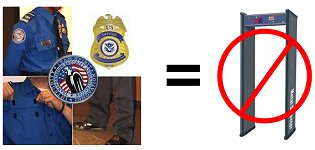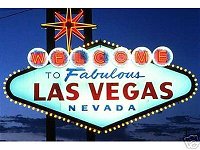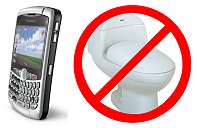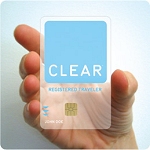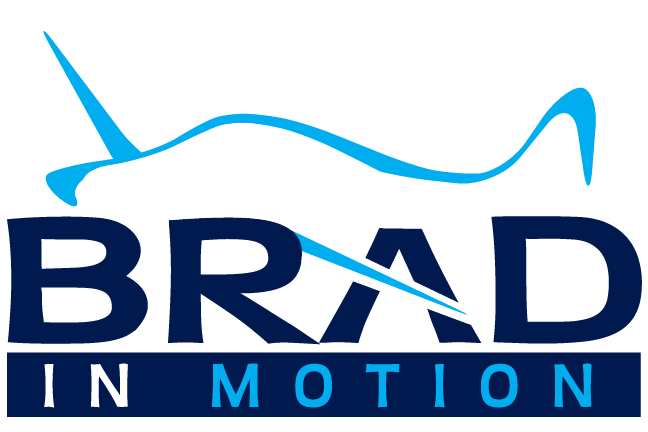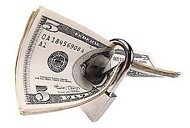
I am firmly against the policy of manufacturers implementing Minimum Advertised Pricing (MAP) programs. The following is a position statement I wrote which I have been distributing within the foodservice equipment industry on behalf of my company and several other concerned dealers for the past several months. I encourage you to use these talking points within your own industry to eliminate this practice which harms consumers and businesses.
My position is based upon the following points:
1. Discrimination Against a Single Channel: MAP pricing programs, as recently introduced within our industry, generally target only one channel of the marketplace – dealers who sell online. If MAP pricing programs are to be implemented, it is imperative that they be implemented equally across all forms of distribution and not discriminate against a single channel.
2. Successful Online Dealers Have Significant Costs: There is a common misconception that dealers who sell in the online marketplace should have restrictions put in place because their business model costs less than others to implement. This could not be further from the truth. In reality, the lowest cost business model in our industry is the contract model in which some dealers have exhibited that they need nothing more than a small office and a phone to conduct business. For a successful e-commerce venture, dealers need to invest in technology, programming, servers, security measures, fraud prevention systems, redundant backup systems, power generation systems and countless other infrastructure items. Additionally, successful e-commerce companies need to invest in training of manufacturer’s products so that they are knowledgeable to field calls, e-mails and live chat sessions from end user customers. The argument that e-commerce is “inexpensive” and therefore needs price controls to keep it in line is misguided and often comes from individuals who have no hands-on experience with how the online world actually operates.
3. Manufacturer’s Shouldn’t Protect Inefficient Dealers: Protecting the distribution channel from themselves is outside of the scope responsibility of the manufacturing community. MAP pricing programs punish efficient dealers and reward those who are either unable or unwilling to change their business models to embrace the marketplace. If Dealer A invests in technology, processes and systems to make their dealership more efficient than Dealer B, they are then able to maintain their margins yet gain a competitive advantage and sell products to the customer at a lower cost than Dealer B. There is no reasonable justification that artificial price controls should be in place to ensure that Dealer B still maintains his margins even though he has chosen not to improve his business to compete in the marketplace. In essence, the principal of survival of the fittest should prevail with Dealer A prospering, as they are able to provide more value to their customers at a lower cost.
4. MAP Pricing is Not Automatically Legal: Since the recent Supreme Court ruling declaring that MAP pricing (referred to as retail price maintenance agreements) are not automatically per se unlawful, numerous manufacturer’s have been touting plans to implement such policies on the basis that they are now “legal.” This could not be further from the truth. Just because something is not inherently illegal does not make it legal in all forms. Each case will now be reviewed under the “rule of reason” which will look at various factors in determining the legality of an individual agreement. The legal community has speculated that this will create a period of turbulence in our court system as individual MAP pricing programs are litigated. It is not in the manufacturer’s best interest to be involved in this legal environment. In essence, MAP pricing programs carry a huge legal risk for manufacturer’s who choose to implement them.
5. Collusion Risk: MAP pricing programs expose manufacturers and dealers who support the programs to a significant legal risk due to the possibility of collusion occurring. This collusion may be between competing manufacturers, or may be between competing dealers. There is a very fine line that must not be crossed or an individual MAP pricing program will likely be considered unlawful under the rule of reason. Again, this is another legal risk that could possibly subject a company to anti-trust litigation.
6. MAP Pricing Hurts Customers: MAP pricing hurts customers – period. Implementing a program that makes it harder for an end user to compare prices among a variety of dealers is not in the customer’s best interest. Why would a manufacturer bite the hand that feeds them by choosing to hurt their customers?
7. MAP Pricing Makes Purchasing More Time Consuming for End-Users: MAP pricing makes customers jump through hoops. How many times have you been to an online site that makes you add an item to the shopping cart to see the “real” price? It happens often in the retail industry as a way to get around MAP pricing. This is because MAP pricing programs can not dictate the selling price of an item or they are illegal. It is common practice that adding an item to a shopping cart is part of the purchase process and not part of the advertising process, therefore not subject to MAP pricing restrictions. By making the end user do this extra step, what are you really accomplishing? Quite simply, you are making them jump through hoops to see your “real” product price. At the same time, your competitor’s product, which doesn’t have MAP pricing, is visible without making the user perform any extra effort. Again, this action is not in the end-user customer’s best interest. The end-user customer is who pays our bills and puts food on the table. The last thing that I would ever want to do is implement a program that would annoy these individuals or cause them extra effort simply to view the “real” price of a product they are interested in purchasing.
8. MAP Pricing May Hurt a Manufacturer’s Sales: MAP pricing may actually hurt a manufacturer’s sales who chose to implement it. Aside from the costs of implementation, the enforcement costs and the significant legal risk, there is the competitive pricing scenario to take into account. If a competitor knows that a company has a MAP price for a product, they can easily price their competitive product (without MAP pricing) so that dealers can freely sell the product at a price which is less than their competitor. If a customer sees two competitive products, one priced at $500 and one priced at $450, my viewpoint is that customer will likely give their primary attention to the lower priced product for consideration first. They may still determine that the higher priced product is worth the (artificially) higher premium price shown, but this opens the door to focusing a customer’s attention away from your products and towards a competitors products who don’t have price controls in place.
9. Advertising vs. Browsing Differentiation: If a customer enters a dealer’s showroom, walks down an aisle, and spots an item, that dealer can the display whatever selling price they deem appropriate for that item. How is the online channel any different? If a dealer advertises their online site (at their own expense) and draws customer to it, that customer enters their site and begins browsing their virtual aisles. The differentiation between what is considered advertising and what is considered browsing is a legal question that is still up for discussion as the case law has not been decided. This is yet another legal risk that manufacturer’s expose themselves to when they decide to implement a MAP pricing program.
10. MAP Pricing Can Be to Circumvented: MAP pricing can be circumvented by dealers who wish to continue advertising products below MAP prices. The previous point mentioned the strategy of utilizing the “add to shopping cart to see the price” method. Dealers can also implement instant rebates, coupons, and other financial incentives to customers to immediately discount an item to whatever price they desire. Dealers can also create free or low cost membership “clubs” which get around MAP pricing as the price shown is not being advertised to the general public in an open forum. Dealers can also simply sell a bundled product offering in which the user pays for an insignificant item, then also receives the item which previously had a MAP pricing restriction for “free”. The end result of any of these work-arounds is that the dealer can advertise the product to the end user at the price they would have anyway prior to the implementation of MAP pricing. The MAP pricing simply puts a larger burden on the dealer to circumvent the policy, while still staying within the guidelines of it. As previously mentioned, it also requires the customer to perform more effort to purchase a particular manufacturer’s product, versus that of their competitors who don’t have MAP pricing restrictions.
11. MAP Pricing Favors Dealers Buying Through Re-Distributors: MAP pricing programs favor those who buy through re-distributors rather than those who have established relationships with manufacturers and buy direct. I’ve heard comments from a number of companies who prefer to buy products through the re-distribution channel specifically for this reason. All of the “authorized” dealers are stuck with an inflated MAP price, while the third party dealer is free to advertise the products at a lower price. Most customers are unaware whether a dealer is authorized or unauthorized, and are more likely to engage a company who advertises a lower price to procure a product than a higher price. What’s the solution? Do you void warranties for those customers who buy products via an unauthorized channel? This again hurts the end-user customer who did nothing more than support your company financially by purchasing your product. If steps such as warranty denial are implemented, how satisfied will the end user be with your company? More importantly, how likely are they going to be to buy your product again in the future? I firmly believe they will have a bad taste in their mouth and will move to a competitive product the next time they need to purchase an item.
12. Lack of Joint Marketing Dollars in Current Programs: Traditionally, MAP pricing programs have been tied to advertising dollars being given to dealers. In return for these funds, the dealer agrees to adhere to the MAP pricing program. The feeling is this is a “fair and reasonable” trade-off – we give you money and therefore we have a say in your advertising. Manufacturers in other industries have conducted themselves in this manner for years. In the foodservice equipment industry however, the MAP pricing programs have not included these additional funds to be paid. This creates a system in which a manufacturer is dictating policies, yet is not participating financially. This is again an extremely fine line that must be examined closely. If a dealer independently advertises a product using their own funds, does a third party manufacturer have the right to dictate pricing policies? Again, the rule of reason applies. Ask a dozen attorney’s for their legal opinion and you’ll likely get a variety of different answers. Currently, the common viewpoint is that this is yet another aspect that will be decided by the court system through litigation.
13. Difficulty in Enforcement: MAP pricing is difficult, if not impossible to enforce. While you can enforce policies against your authorized dealer channel, as stated previously, those dealers who procure products through re-distributors, or re-sell them to separate “online companies” (often owned by the same people who own the parent corporation) are immune from enforcement. Therefore, you’ll be spending time and resources to enforce policies against who are most likely your best customers – your authorized dealers. Along these same lines, the enforceability issue reminds me of the whack-the-mole game at amusement parks. As soon as you hit one mole and eliminate one violation, another one pops up. Do manufacturers want to spend countless hours and massive amounts of money playing this game, or would they rather focus on running their business and bringing new and improved products to the market that will be more financially beneficial in the long run?
14. Exposure to State Anti-Trust Laws: MAP pricing may violate state anti-trust laws. Each state has its own antitrust laws that can be enforced against companies. This is an important consideration when developing a MAP pricing program. Essentially, to ensure you are in compliance universally, you will need your program reviewed in accordance with the laws of each of the 50 states so that it can be written and enforced in a manner which doesn’t violate any of those state’s laws. I highly doubt that most manufacturers in our industry will take such a time consuming and expensive step, yet by not doing so, they are opening themselves to the possibility of anti-trust violations and litigation against their company.
15. Dealers are Typically Independently Operated: Dealers in our industry are not typically mega-corporations. Though there are a few notable exceptions, for the most part dealers are made up of entrepreneurial families. They put their heart and souls into the business and enjoy the freedom of running it in a manner they deem most appropriate to meet the financial goals of the business. It generates animosity towards manufacturers who take it upon themselves to dictate to these individual business owners what they can and can’t do in their business in relation to selling various products.
16. MAP Pricing May Not Be What Most Dealers Desire: I have seen estimates that more than half of people in the foodservice equipment industry do not feel that a MAP pricing program can be effectively implemented in our industry. This is an important consideration that should remind you that decision on this matter should not be taken lightly. You should at the very least survey your dealer base to see where people stand on this issue prior to moving forward. I personally have noticed that those dealers who are in favor of MAP pricing tend to be more vocal, and therefore may make manufacturers feel that this is a move that most dealers want. In reality, this may not be the case.
17. The Free Enterprise System: Lastly, the United States economy is based upon a system of free enterprise. The free enterprise system is an economy in which the pricing of goods is determined by the market economy. MAP pricing programs are contrary to this economic system, as they come strikingly close to a socialized system of price fixing.
I hope you’ve learned more about some of the implications of MAP pricing programs as you’ve read this posting. I fully acknowledge that there are a wide variety of viewpoints on this subject as well as arguments that make a case in favor of MAP pricing. I fully respect the opinions of those dealers and manufacturers who have these viewpoints. I personally, and my company, however, feel that the risks and downsides of MAP pricing programs far outweigh the arguments in favor of such price control programs.
IMPORTANT DISCLAIMER: The views expressed in this document are solely those of myself and my company. They are not in any way reflective of nor the official policy statements or views of an organization, group or association that myself or my company are affiliated with in any manner.
